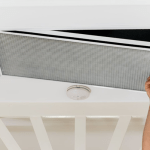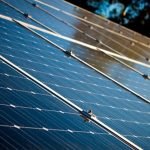
Solar power is one of the best renewable energy sources around. Now, solar energy can supply over 18 million average American homes. It will increase in the future, with one in seven houses getting a solar power system by 2030.
If you want to get home solar panels, consider learning the best one for you. After all, not all systems have the same features.
Do you need a good starting point? If so, continue reading to discover various types of solar panels in the market.
Monocrystalline Solar Panels
These panels appear black because of how light interacts with its material—pure silicon crystal. However, most monocrystalline solar panels use various frame and back sheet colors.
In most cases, the back sheet will be silver or white. Meanwhile, metal frames use either black or silver to distinguish themselves.
Monocrystalline solar panels are the most expensive option. Growing a single, pure silicon crystal is possible due to the Czochralski process. For this reason, the manufacturing process is more costly, energy-intensive, and wastes silicon.
Monocrystalline panels often make more power than other types. It’s because they have higher efficiency and wattage modules. On average, these have over 300 watts of power capacity and 20% efficiency.
Polycrystalline Solar Panels
With these solar cells, there’s often a bluish hue to the silicon fragments reflecting light. Regardless, they also use various back sheets and frame colors. They use silver or white for the former and silver for the latter.
Polycrystalline solar panels are usually cheaper than their monocrystalline counterpart. After all, they use silicon fragments instead of pure crystals. It makes cell manufacturing simpler.
The trade-off is the lower energy efficiency. This type of solar panel only has 15% to 17% efficiency. It also means lower wattages.
Thin-Film Solar Panels
These residential solar panels use thin and low-profile technology for their aesthetics. Its cells are 350 times slimmer than the abovementioned types of solar panels.
However, the width is similar if the thin-film panel uses a thick frame. You can use adhesive variants lying as close as possible to your roof surface. If you want durability, consider getting those with frames that are 50-mm thick.
Out of all variants, thin-film solar panels have the lowest efficiency. It depends on the specific material for the cells. The average is 11%.
Also, thin-film technology lacks standard cell variants. It means a thin-film panel’s power capacity depends on its size.
These solar panel options often have lower installation costs due to the less-intensive requirements. However, before installing solar panels in your home, consider reading the linked guide for more info.
Learn Other Types of Solar Panels Now
These are the primary types of solar panels in the market. Pick the best solar panels in your home using their features.
However, your choice of solar panel installer will affect its quality. Consider looking for reputable contractors online. Ask for recommendations from trustworthy people to start your search.
Did you find this guide helpful? If so, consider reading our other posts for more valuable tips and tricks today.






